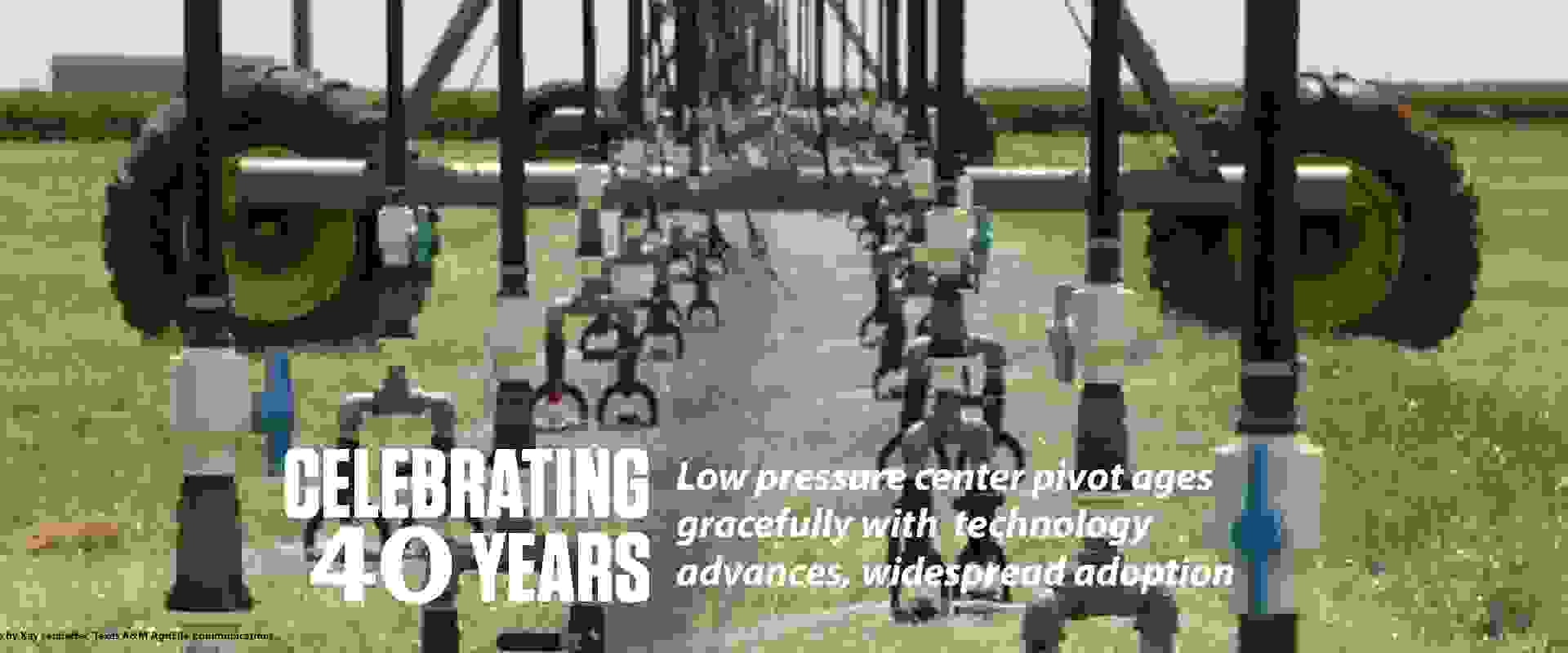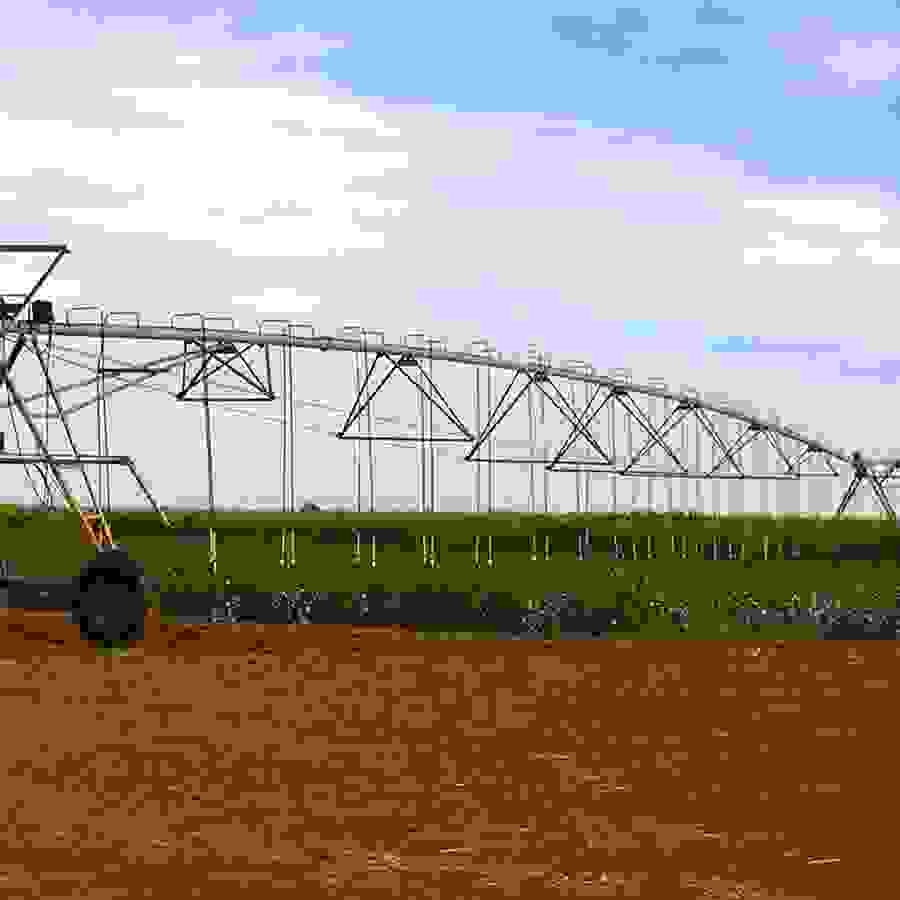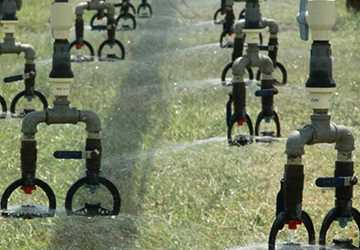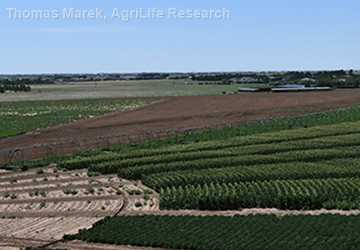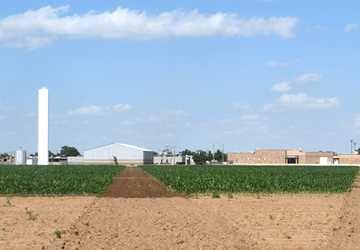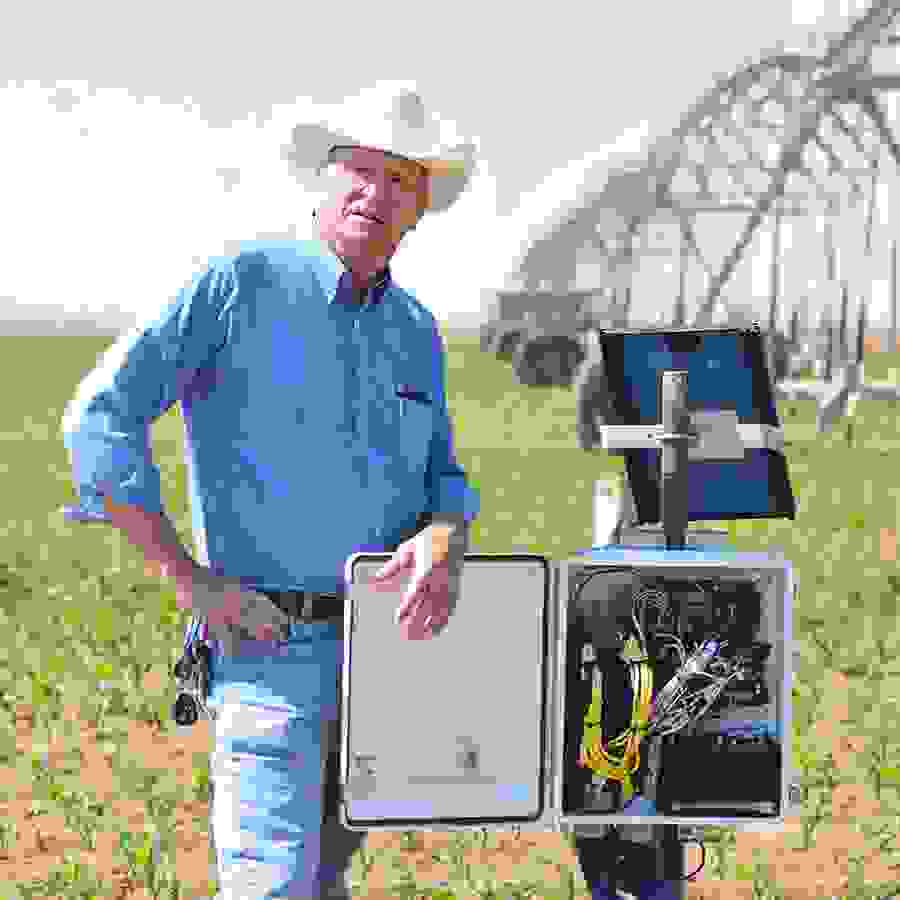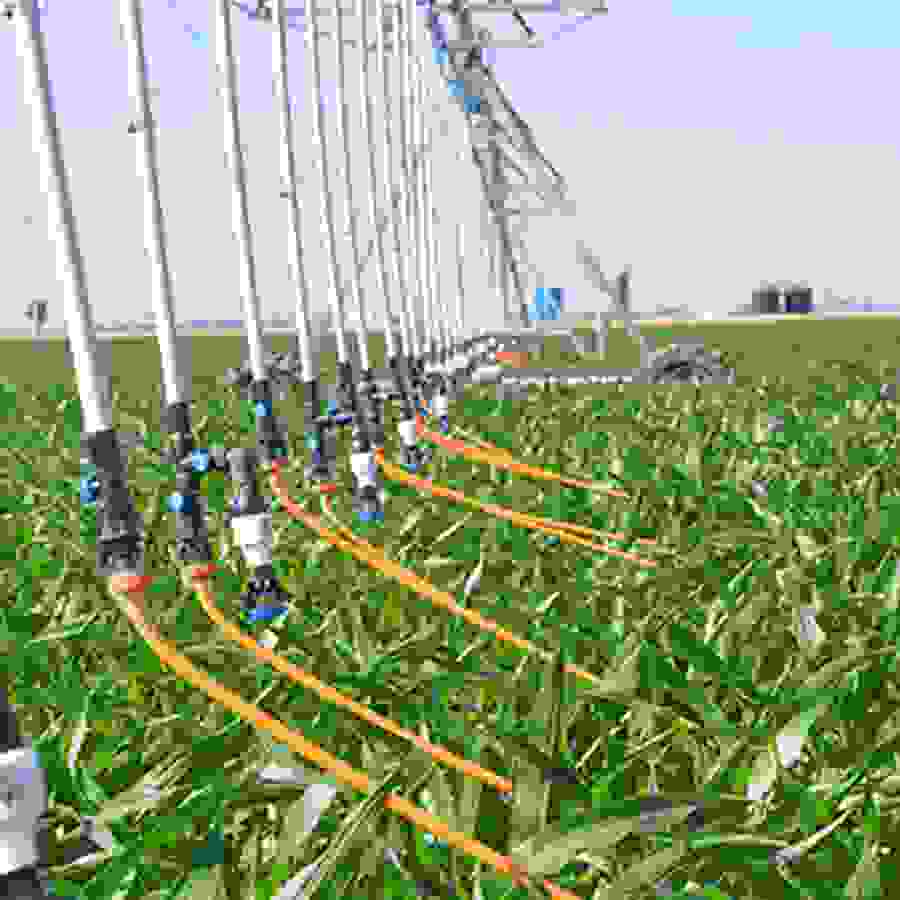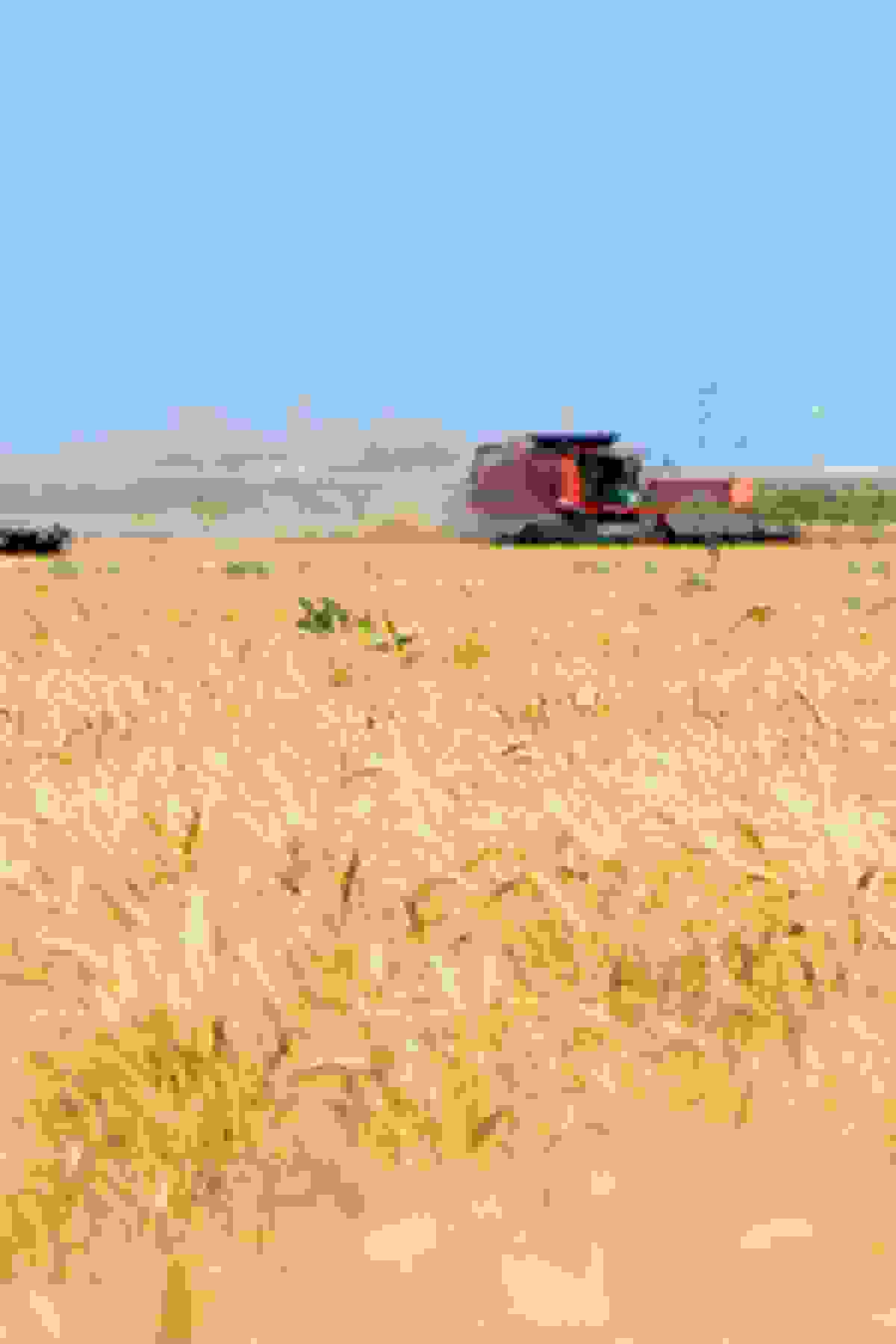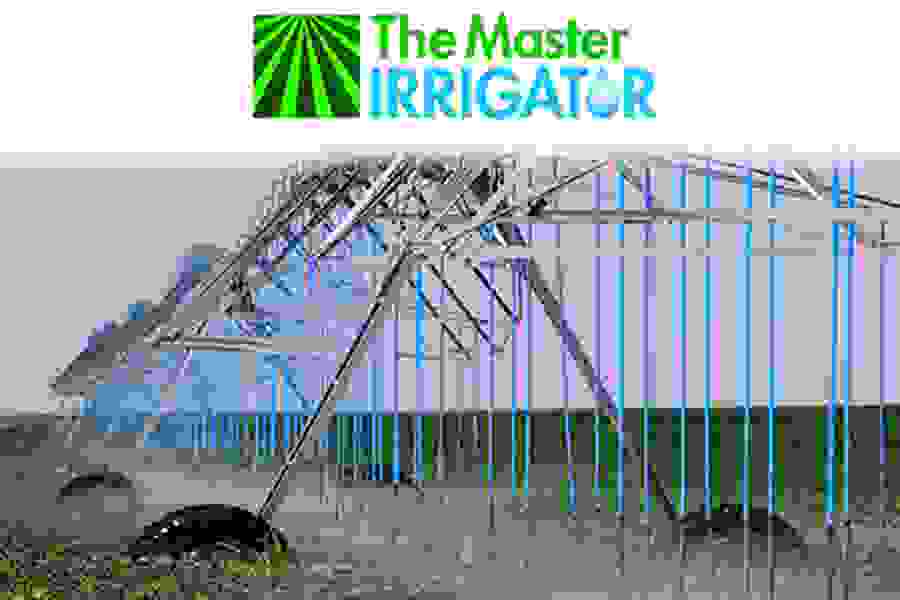A group of researchers from the Ogallala Aquifer Program (OAP) are celebrating 40 years of low pressure center pivot irrigation in 2018 with field days, publications and educational presentations. The goal of the celebration is to promote the adoption of efficient irrigation technologies and recommended management practices to help producers make the most out of their center pivot systems.
From summer field days in Texas and Kansas to special technical sessions at annual conferences, researchers are providing producers with updates from locally relevant research programs and highlighting the latest in emerging technologies. The OAP team is celebrating the past and present of center pivot irrigation, and looking forward to the future.
The early days of center pivot irrigation
Back in the early 1950s, Frank Zybach, a farmer and inventor, sought a better way to irrigate without using flood or furrow irrigation. He developed an irrigation machine and applied for a patent. His patent for the “Zybach Self-Propelled Sprinkling Irrigation Apparatus” was approved in 1952. While he developed the idea, the rights did not remain with Zybach for long.
A group of researchers from the Ogallala Aquifer Program (OAP) are celebrating 40 years of low pressure center pivot irrigation in 2018 with field days, publications and educational presentations.
More information
Robert Daugherty, a Nebraska businessman, bought the rights for the center pivot design from Zybach in 1953. After this purchase, Daugherty worked on improving the system through his company, Valley Manufacturing, now known as Valmont Industries. The company engineers worked to increase the reliability of the system and upgraded the motor to electric, according to the company’s website.
Center pivot irrigation systems use a movable platform outfitted with pipes and sprinklers to deliver water to crops. Modern systems are powered using electric or hydraulic motors, while the earlier systems used water power. The entire system pivots around a central point, resulting in a distinctive circle pattern when viewed from above.

Developments to center pivot technology have helped maximize the investment in irrigation through increased crop productivity and reduced energy use, according to a 2004 Texas Water Development Board report.
Most of these newer, advanced technologies are low pressure systems that use less energy. Low pressure systems in use today are low energy precision application (LEPA), low pressure in-canopy (LPIC), low elevation spray application (LESA) and medium elevation spray application (MESA). These systems maximize water efficiency by placing sprinkler heads closer to the soil surface — between 12 to 18 inches for LESA systems — reducing evaporation losses during application. By reducing evaporation losses, more water gets into the soil where it is available for plants and not returned to the atmosphere.
Today, center pivot irrigation technology has become widely accepted by the agricultural community with many producers using these irrigation systems, according to Dr. Dana Porter, Texas A&M AgriLife Extension Service agricultural engineer at the Texas A&M AgriLife Research and Extension Center in Lubbock.
“About 75 percent of the producers in the Texas High Plains use center pivot systems,” Porter said.
Moving to lower energy systems
Porter said the transition to low pressure center pivot irrigation began in the late 1970s, when center pivot systems became more widely accepted by producers and high energy costs amplified the importance of energy and water efficiency. There is a high cost to pump water and drill new wells when the water table is low, which is the case in the Texas High Plains, she said.
With limited water especially in the Ogallala Aquifer region, producers rely on innovation to continue using the same resource to grow additional crops, increase productivity and save money.
“Producers are quick to adopt technologies that will improve their net returns,” said Dr. Freddie Lamm, research agricultural engineer with the Kansas State University Northwest Research-Extension Center. “Water is often a limiting factor and producers are keenly interested in technologies that will improve crop water productivity.”
Low pressure center pivot systems fit well in the Ogallala region, as they are readily applicable for the cropping systems as well as for a variety of soils and the large, open spaces.
“Low pressure center pivot irrigation is especially well suited for the Texas High Plains,” Porter said. “The technology was developed in this region and large fields in the area make it practical to use.”
Lamm said future advancement of center pivot will rely on optimizing water application for varying topography, and soil and crop conditions that differ in a given area.
Water is often a limiting factor and producers are keenly interested in technologies that will improve crop water productivity.
Much of this innovation is driven by the motivation to use water efficiently.
“There are many drivers to irrigation innovation, but the foremost influences are economics and declining water resources for agriculture,” Lamm said.
The future of low pressure center pivot irrigation
Innovation continues for center pivot irrigation, including new technologies and ways to manage the amount of water distributed by the system.
“Science-based irrigation scheduling and smart irrigation systems will continue to evolve,” Lamm said. “Incorporating knowledge from these systems with producer training on optimum irrigation will improve operation and management of irrigation systems.”
While developments in technology have made systems easier to control and contributed to better water use, there are still hurdles to cross in the race toward water conservation.
“Researchers in the public and private sectors are working on exciting research in irrigation,” Porter said. “New developments in irrigation technology will benefit the irrigation industry and end users.”
There are many drivers to irrigation innovation, but the foremost influences are economics and declining water resources for agriculture.
These new developments are leading to increased crop production and water conservation, while considering the importance of irrigation system management.
“The most important thing we have learned in the past four decades was basically known at the outset,” Lamm said. “When management is insufficient, the irrigation efficiency can be just as poor as when the older technologies were used.”
Over the past 40 years, the system has seen significant advances. The use of technology and science-based data will certainly continue over the next 40 years and help future producers manage water more effectively than ever before.
When producers rely on good management techniques and embrace innovation, there is reason for celebration.
Explore this Issue
Authors
Alexandra was a graduate communications intern for the Texas Water Resources Institute, providing assistance to the communications team with the institutes’ publications, including Conservation Matters and txH2O magazine.

